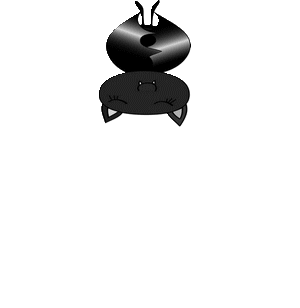Skills and Talents That Aid a Career: What They Are and How to Build Them
Overview: What Are Skills and Talents in a Career Context?
In career development, skills and talents that aid your progress are examples of employability assets-specific hard skills, soft skills, and broader capabilities that help you perform, collaborate, and deliver results on the job. According to workplace skill frameworks, hard skills are the technical, measurable abilities; soft skills are interpersonal and problem-solving abilities; and capabilities combine both to achieve outcomes in real contexts [1] . Many employers actively evaluate and prioritize both hard and soft skills in hiring and advancement decisions [3] .

Source: thinkingcollaboration.blogspot.com
Key Definitions: Hard Skills, Soft Skills, and Capabilities
Hard skills are technical, teachable abilities that can be tested, certified, or otherwise measured. They often come from formal education, training, or hands-on practice-such as data analysis, programming, CAD, bookkeeping, or medical coding [2] . These skills are frequently used as screening criteria for roles, like a programming language for developers or a specific medical procedure for clinicians [1] .
Soft skills are interpersonal and cognitive skills such as communication, collaboration, leadership, adaptability, and problem-solving. Employers look for these to gauge how you work with others and navigate challenges-often assessed through behavioral interviews and work samples [1] . Resume guides also emphasize pairing soft skills with role-relevant hard skills for a balanced profile [3] .
Capabilities are applied competencies-your ability to integrate multiple skills and knowledge to achieve outcomes in context. For example, “startup fundraising” is a capability that blends negotiation (soft), financial modeling (hard), market research (hard), and resilience (soft) [1] .
Why These Assets Matter in Hiring and Promotions
Employers routinely evaluate your mix of hard and soft skills because both predict contribution and fit. Hard skills often determine baseline qualification, while soft skills influence collaboration, leadership potential, and problem-solving under uncertainty [1] . Resume frameworks from major job boards show how roles combine both-e.g., data analysts need SQL and Excel plus communication and attention to detail; teachers combine curriculum planning with adaptability and emotional intelligence [3] . In short, the right blend increases employability and advancement potential across industries [3] .
Examples of Career-Aiding Skills and Talents
Hard skills commonly requested include programming, data analysis, project management, financial forecasting, CAD, UI/UX, medical billing, and more-learned through courses, certifications, and practice [2] . Soft skills that elevate performance include leadership, collaboration, communication, and stress management-traits often assessed beyond the resume [1] . Employers across careers value both, and candidates can map role requirements to a tailored skill set for better outcomes [3] .
How to Identify Your Career Skills and Talents
Step 1: Map role requirements. Review 10-15 current job postings for your target role and list repeating hard and soft skills. This aligns your self-inventory with market demand and clarifies gaps you can address with learning or projects [3] .
Step 2: Inventory what you have. Categorize your skills into hard (tools, methods, certifications) and soft (communication, leadership, teamwork). Use prior achievements to validate each item-for instance, “built an Excel model to forecast sales variance” or “led a 5-person cross-functional task force” [2] .
Step 3: Group into capabilities. Combine skills into outcomes-e.g., “go-to-market planning,” “process automation,” or “classroom management”-to show you can apply skills in real contexts. This framing mirrors how organizations think about results and potential [1] .
How to Develop In-Demand Skills
Hard skills development. You can build measurable expertise through structured learning (courses, certifications), on-the-job practice, and projects. Examples include learning SQL and data visualization for analysis roles or taking a recognized bookkeeping course for finance support roles-both approaches can be validated via work samples and credentials [2] . Resume guidance suggests highlighting tools, certifications, and outputs that demonstrate proficiency for your target job family [3] .
Soft skills development. Build communication, collaboration, leadership, and adaptability through deliberate practice: volunteering to lead meetings, facilitating retrospectives, mentoring newcomers, or running small cross-functional pilots. Interviewers often probe these areas with behavioral questions, so practice stories that demonstrate conflict resolution, stakeholder management, and decision-making under pressure [1] .
Capability building. Create projects that require multiple skills-like designing a dashboard for a real stakeholder, coordinating a community event, or launching a micro-campaign end-to-end. These efforts both strengthen your capabilities and produce artifacts you can use in portfolios and interviews [1] .
Presenting Your Skills on Resumes and Profiles
Tailor to the role. Resume best practices recommend mirroring the target role’s language and showing a balanced list of hard and soft skills alongside quantified achievements. For example, a data analyst might list SQL, Excel, and R with bullet points about reduced processing time and business impact, plus soft skills such as collaboration and communication demonstrated in cross-team projects [3] .
Use outcome-oriented bullets. Pair skills with results: “Built a Python script to automate reporting (saved 6 hours/week)” or “Led stakeholder workshops to align roadmap (decreased rework).” This approach shows capabilities, not just keyword lists, and aligns with how employers evaluate contributions [1] .
Portfolio and work samples. When applicable, include links to public repositories, design portfolios, or writing samples. If you cannot share proprietary work, create sanitized or personal projects that reflect relevant skills (e.g., a dashboard with open data or a mock marketing plan) to demonstrate proficiency [2] .
Role-Specific Combinations: Practical Examples
Data Analyst. Hard skills may include SQL, Excel, R, and visualization; soft skills include communication, problem-solving, and attention to detail-often combined to transform raw data into actionable insights for stakeholders [3] . An implementation path could include completing an SQL course, building a public dashboard, and presenting findings to a non-technical audience.
Teacher. Hard skills might be curriculum planning and classroom management; soft skills include communication, adaptability, leadership, and emotional intelligence. A growth plan could involve designing new lesson plans, piloting a flipped classroom model, and collecting feedback from peer observations [3] .
Operations or Project Roles. Hard skills like project management, logistics, or data analysis pair with soft skills such as collaboration and adaptability. Candidates can run small process-improvement initiatives and document cycle-time reductions and stakeholder satisfaction to showcase capabilities [2] .
Step-by-Step Plan to Build Your Career Skill Set
1) Define your target role. Choose a job family (e.g., analyst, educator, marketer) and gather 10-15 job descriptions to extract common hard and soft skills, tools, and outcomes expected [3] .
2) Run a gap analysis. For each required skill, rate your proficiency and identify proof points (certifications, projects). Flag gaps where you lack validation so you can design learning sprints [2] .
3) Design learning sprints (4-6 weeks). Select 1-2 hard skills and 1 soft skill per sprint. For hard skills, follow a course and complete a capstone project; for soft skills, practice in real meetings and solicit feedback. Tie outputs to a public or shareable artifact when possible [2] .
4) Build capabilities via projects. Choose projects that force integration-e.g., market research plus stakeholder workshops leading to a brief and a pilot test. Document the problem, your approach, the result, and what you learned [1] .
5) Update your resume and profile quarterly. Add fresh skills, quantify outcomes, and tailor keywords and examples to current postings for alignment and visibility in screening systems [3] .
Common Challenges and How to Overcome Them
Challenge: Proving soft skills. Solution: Use stories demonstrating conflict resolution, cross-functional collaboration, or stakeholder influence; prepare behavioral STAR examples for interviews to validate outcomes and learning [1] .
Challenge: Limited experience. Solution: Create practice projects, volunteer for real problems, or pursue internships and apprenticeships to generate evidence. Build a portfolio where feasible with non-proprietary samples tied to role-specific skills [2] .
Challenge: Choosing which skills to learn next. Solution: Let market demand guide you by aggregating requirements across several postings for your target role and prioritizing recurring tools and competencies [3] .
Alternative Approaches to Building Career Assets
Cross-functional rotations. Seek short-term rotations or shadowing to quickly broaden capabilities and uncover strengths, especially in dynamic environments where adaptability is prized [1] .
Micro-credentials and focused certificates. Short, targeted credentials can help validate new hard skills and ease transitions between roles or industries. Pair them with applied projects to demonstrate capability, not just coursework [2] .
Peer learning and mentorship. Join study groups, practice communities, or mentoring circles to deepen soft skills like leadership and collaboration while accelerating technical learning through code reviews, design critiques, or case walkthroughs [1] .

Source: za.pinterest.com
Key Takeaways
Skills and talents that aid a career are examples of core employability assets comprising hard skills, soft skills, and applied capabilities. Employers assess and reward a balanced, outcome-focused mix. You can identify, build, and present these assets through targeted learning, integrated projects, and outcome-oriented storytelling on resumes and in interviews [1] [2] [3] .
References
[1] SeekOut (2024). Talent vs Skill: Defining Success in the Workplace. [2] EdgePoint Learning (2023). Hard Skills vs. Soft Skills: Definitions and 50+ Examples. [3] Indeed Career Guide (2024). 10 Best Skills To Put On Your Resume (With Examples).


